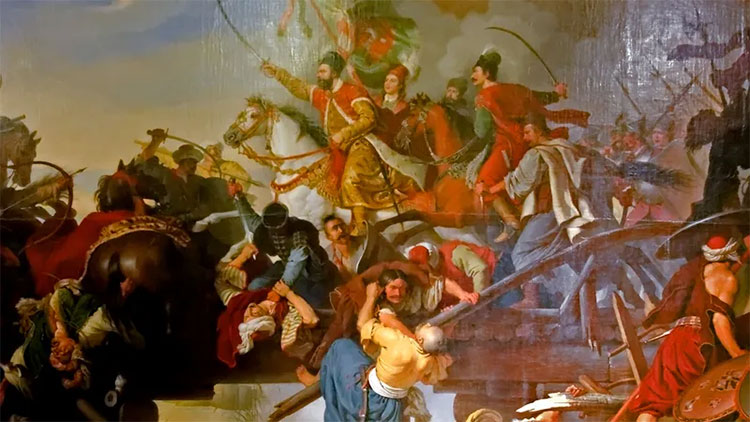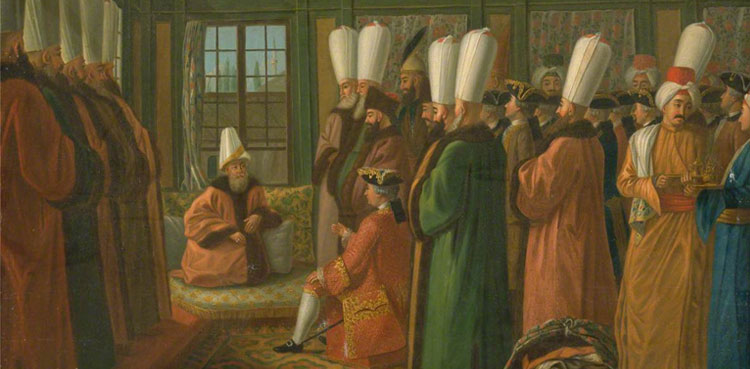Janissary Force of the Ottoman Empire
- By Zoya Ansari -
- Aug 08, 2023

The history of Janissary corps of the Ottoman Empire is instructive for the policy makers dealing with armed forces of states. Janissaries was a remarkable coercive instrument developed by the Ottoman Empire to pursue its policy of conquest throughout Asia, Middle East and Europe.
It was a dedicated fighting force fanatically loyal to the ruler who kept it provisioned with latest weaponry and granted an almost inviolable status to its personnel. Janissaries as an elite infantry unit were raised by Ottoman Sultan Murad I, the third ruler of Ottoman Empire as royal bodyguard. Before their advent, Ottoman army was composed of foot soldiers from various tribes who were in a loose allegiance with the ruling family and often proved unpredictable in their loyalty, efficiency and war spirit. The mainstay of the army was cavalry comprising exclusively of Turkish noblemen who were also whimsical in their adherence to the ruler.
The Sultan faced incessant threats from his aristocracy and also from the growing population of protesting Christians who became subjects of Ottoman rule as it expanded to the Balkans and the Caucasus. The plan of raising an exclusive armed group was facilitated by the complex slave-owning system inherent in Ottoman society. The system allowed for enslavement of subject nationalities predominantly Christians and other non-Muslim people. Known to history as the devşirme system, a complicated form of slavery according to which prisoners of war, hostages and slaves were purchased by the state for performing multifarious functions. Consequently, the Christian families of Anatolia, Balkans, Armenia and Georgia were forced to give away their most able sons, preferably 8-14 years of age, into the Sultan’s service.
To begin with, the Ottomans enrolled all Christians indiscriminately but in the later stages Christians recruits from Albania, Bosnia, and Bulgaria were given preference as they proved far better in adapting to the requirements expected of them.

The boys were made to convert to Islam and were accordingly circumcised and mostly given Muslim names. The recruited lot was subjected to tough training and was required to be mentally and physically alert and agile. As a matter of policy children from Turkic families were never taken in. Initially such slavish recruitment was opposed but it soon emerged that service for Sultan was far more beneficial than languishing in cramped Christian quarters in subjected areas.
The Janissaries were no ordinary slaves and were rated above many strata of Ottoman society and ultimately formed their own distinctive social class. Members of Janissary Corps were sworn to celibacy as it was considered undesirable that they should leave descendants. They were forbidden to grow beards and prohibited to engage themselves in any other activity than soldiering. They were required to be fanatically loyal to the Sultan and were restricted to inhabit confines of specially created cantonments. The Corps gradually grew in numbers and by the early 16 century their personnel swelled to 40,000.
Sultan treated the Janissary soldiers as his favourite and placed them as a counterbalance to aristocracy. Janissaries did their utmost to outshine in an aristocratic society as they belonged to poor social backgrounds. Nothing impeded them to prove their worth and they went out of the way to do precisely that. Their military training was exhaustive that transformed the boys into accomplished soldiers of the Empire by the time they reached the age of 25. The Corps created heartburn in rest of the army due to its very high rates of salary that was regularly paid to them. Their employment was pensionable and carried tremendous perks in its wake.
Janissary Corps was the first to be provided with firearms in the Ottoman army and were specially trained for them. The state undertook provision of a well organised logistics system that in both war and peace kept them self-sufficient. The medical system designed for them was extremely modern and very well equipped. Ottomans organised Janissary Corps in Ortas or battalions. Sultan Suleiman had 165 Ortas and the number of Ortas increased to 196. The Sultan was the Supreme Commander of the force with Sultan’s bodyguard numbering 61 Ortas. The distinct class of Janissaries was protected by Sultans who dutifully adhered to the regulation that only Janissaries’ own commanding officers could punish them. The personlised nature could be gauged from the fact that their ranks were based on positions in the kitchen staff or Sultan’s royal hunters.
The Ottomans owed their victorious march on the continents of Asia and Europe primarily to the fighting prowess of the Janissaries. This elite corps became nemesis of European kingdoms and Asiatic principalities. They played a decisive role in the capture of Constantinople in 1453 that transformed Ottomans into a power to be reckoned with. They were instrumental in clinching victory for the Ottomans against Egyptian Mamluks destroying a potential power that could challenge them. By using cannon and firearms and holding the centre of the army during battles the Janissaries humbled experienced Austrian and Hungarian forces. The Corps was usually led by the Sultan and was always given a large share of the war booty. The Corps was known to wreak havoc and was notorious for not showing mercy to opponents.
The awe with which Janissaries were held in the Ottoman Empire and by sheer dint of their meritorious conduct they were able to become fabulously wealthy wielding enormous influence and enjoying unbridled power. The more successful they became the more they demanded increases in their salaries and larger percentage of war booty. They became mindful of their status as king-makers. As their clout grew they permeated all structures of government placing their men everywhere in the government. They ignored their oath to remain celibate and forced Sultan Selim II to give them permission to marry in 1566 and entered into multiple matrimonial alliances.

They stopped residing in barracks and bought their own houses where they lived with their extended families. The negatively disastrous aspect of Janissary power was first witnessed in 1449 when they revolted for the first time. After 1451 every sultan was obliged to pay a cash donation on his accession. There was a simmering resentment to the highhandedness of Janissaries and it deepened by the fact that their growing material prosperity dampened their martial spirit and they became ineffective as a war machine.
The campaign against their hegemony was initiated by Sultan Osman II who was humbled in war against Poland in 1621 and planned disbanding the Janissary Corps for its poor performance but the Janissaries retaliated by kidnapping the Sultan and murdering him. They kept on increasing their power and in 1804 formed an illegal state in what is today known as Serbia, inciting a national uprising and by 1808 Sultan Mahmud II resolved to get rid of them. The personnel strength of this once trim and effective war machine had skyrocketed to 135,000 but their day of reckoning was not far. Sultan Mahmood II planned carefully for 18 years and in 1826 he was ready to move against them.
His proclamation of raising a new army on European lines prompted Janissaries to mutiny and they advanced towards Sultan’s palace. Sultan forced them in the open area around their barracks and fired artillery shells on them killing 4,000 instantly. He disbanded Janissary Corps after more than 500 years of their existence and exiled or executed them confiscating their property.
